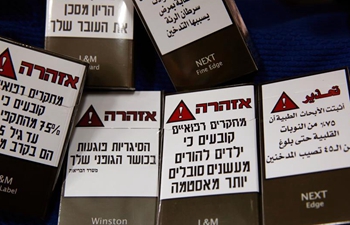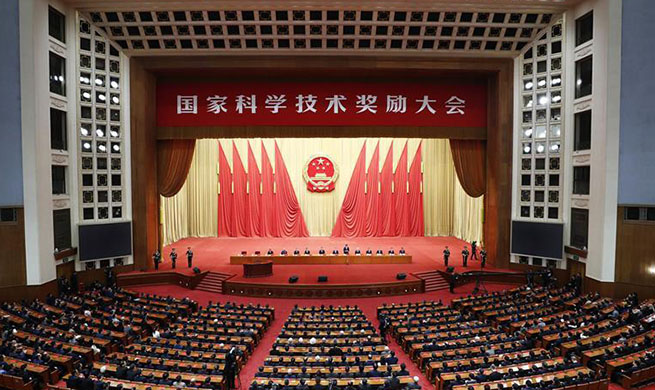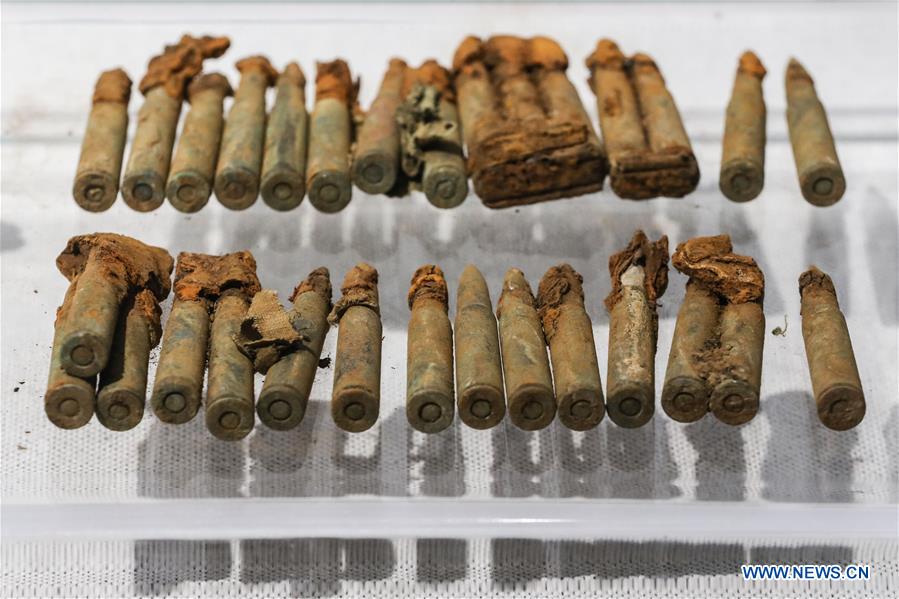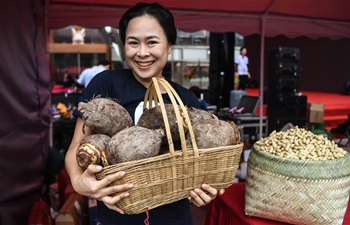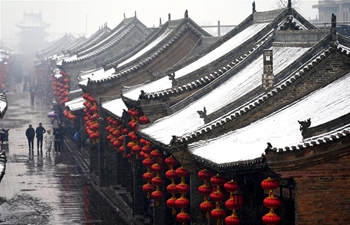MANILA, Jan. 10 (Xinhua) -- The Philippines' total external trade in goods continued to fall in November 2019, the Philippine Statistics Authority (PSA) said on Friday.
The PSA said in a report that total merchandise trade contracted 5.3 percent in November 2019, from 15.35 billion U.S. dollars external trade recorded in November 2018. Exports and imports of goods fell by 0.7 percent and 8.0 percent, respectively, in the same month, it added.
Of the total external trade, the PSA said 5.60 billion U.S. dollars or 38.5 percent were exported goods and 8.94 billion U.S. dollars or 61.5 percent were imported goods.
The PSA said exports declined due to lower shipments of agro-based products, petroleum products, and the flat growth in manufacturers. Imports also decreased because of lower inward shipments for unprocessed and semi-processed raw materials, including manufactured goods, it added.
The Philippines' balance of trade in goods in November 2019 recorded a 3.34 billion U.S. dollars deficit, down 18 percent from November 2018.
The Philippine National Economic and Development Authority (NEDA) stressed the need to further strengthen the diversification and management of the use of energy sources in the Philippines to avoid potential supply shocks amid the slow recovery of global trade.
"The heightened conflict between the U.S. and Iran and its impact on oil prices could result in increased cost of production for domestic-oriented as well as export-oriented firms," said Ernesto Pernia, Philippine socioeconomic planning secretary.
The Philippines imports the majority of its petroleum supply from the Middle East region, particularly Saudi Arabia, the United Arab Emirates, and Kuwait, despite indications that the country's trade exposure to the leading trading partners in the Middle East are small out of the country's total trade.
Pernia said the Philippines has increased its inward shipments of petroleum oil from other territories, particularly South Korea, Malaysia, and Russia.
In its sectoral plans and roadmaps, the Philippine Department of Energy identifies a number of initiatives towards increasing the country's energy resources. These include geothermal, hydro, solar and wind, among others, which will substantially lessen the country's dependence on petroleum.
On top of these initiatives on energy sources, Pernia said the government should also continue developing industries and encouraging investments in key sectors to provide more employment opportunities for Filipinos.
"The promotion of innovation and continuous support to entrepreneurs will provide better and quality jobs that will entice professionals currently working abroad to relocate to the country even in the absence of conflict," he said.




